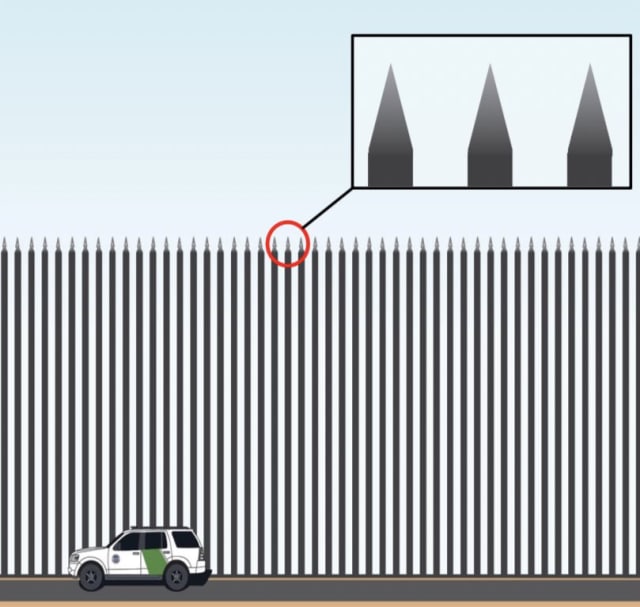
On December 21, President Trump tweeted a picture of a possible design for a steel bollard-style border wall. More recently, he’s signaled that he’s willing to “compromise” with Congressional Democrats and have a steel wall instead of a concrete one. (Image courtesy of Twitter.)
As the U.S. government shutdown drags on, President Trump has said that he’s willing to compromise with Congressional Democrats by building a steel wall instead of a concrete one along the country’s southern border.
In a recent interview with NBC, acting chief of staff Mick Mulvaney said, “If he has to give up a concrete wall, replace it with a steel fence in order to do that so that Democrats can say, ‘See? He’s not building a wall anymore,’ that should help us move in the right direction.”
But whether or not the Democrats would be more likely to agree on funding a steel wall, it’s unlikely that such a wall would be very useful for its stated function. To understand why, we need to know something about the prototype-testing process, the building properties of steel, and the recent increase in material costs.
See-Through, Saw-Through
According to the Department of Homeland Security (DHS), the plan is to build a “steel bollard-style wall” that’s made of hollow, vertical steel beams filled with concrete and rebar. The proposed wall sounds similar to the bollard fences that already populate parts of the border, with gaps between the bollards to allow for…

